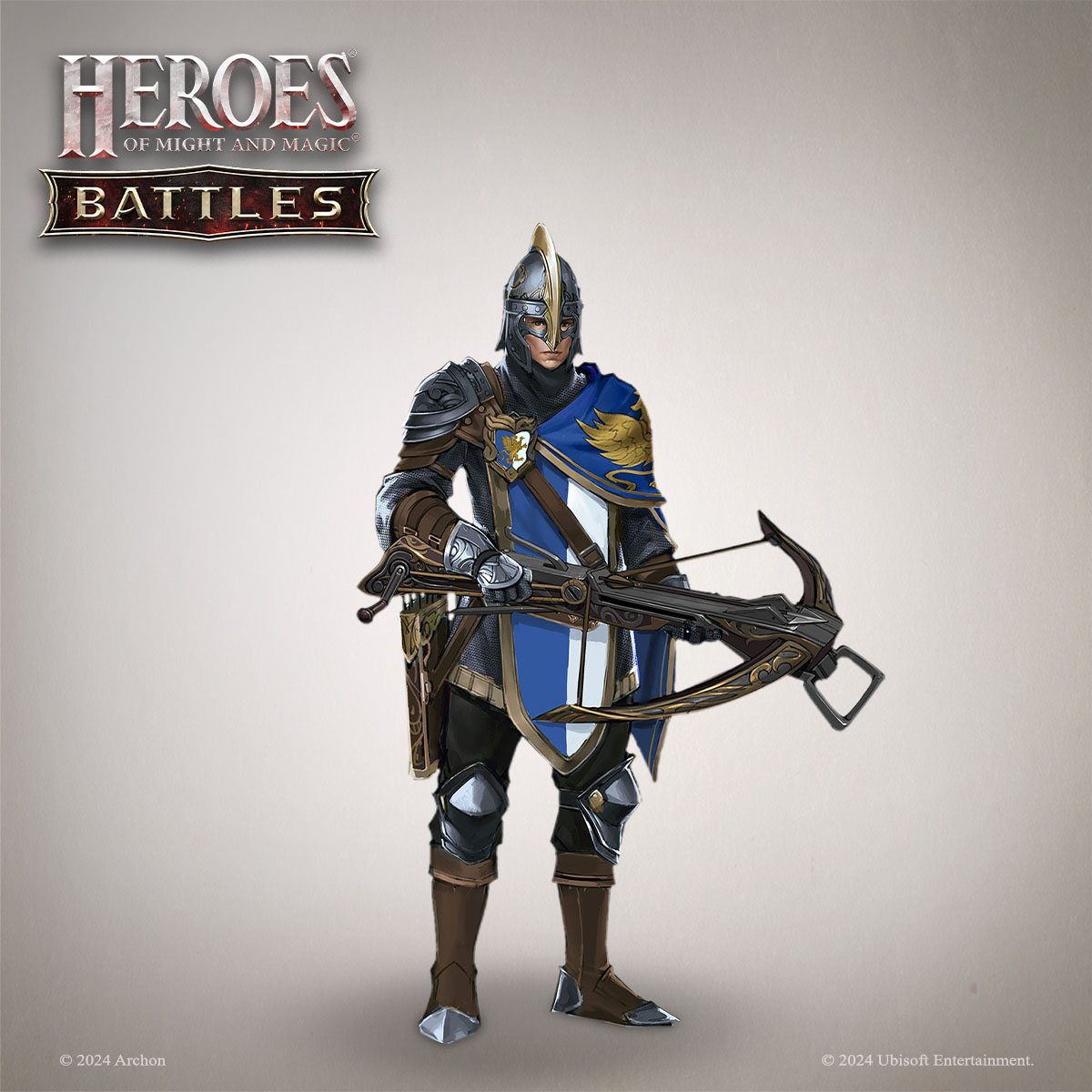Warhammer legends Andy Chamber and Jervis Johnson are back for another heist… I mean wargame.
Just like David Hasselhoff And The world of BeakmanSome things have remained much more popular overseas than they have here in the States. The same can be said of Jon Van Caneghem’s long-running role-playing strategy video game series, Might and Magic, currently owned by French publisher, Ubisoft. Now, the multi-genre fantasy franchise is making the leap to tabletops in the form of a miniatures wargame called Heroes of Might and Magic: Battles.
Most consumers, however, probably won’t be standing up and giving their tiny new overlords a warm welcome. That’s because miniatures wargaming is a hotly contested market, both domestically and abroad. So how does licensor Archon Studio (Wolfenstein: The Board Game, Masters of the Universe: Battlefield) plans to take on Games Workshop, the 800-pound gorilla that’s dominated the space for more than 30 years? By hiring two of its most lauded former designers, Andy Chambers and Jervis Johnson, to do the dirty work. Polygon spoke to both men via video conference earlier this month, and they’ve clearly done their high-fantasy homework.
Chambers and Johnson told Polygon that Heroes of Might and Magic: Battles will be based on the franchise’s most beloved expression, the PC hit Heroes of Might and Magic 3: The Restoration of Erathia. The game, which came out in 1990, is still a bit of a unicorn, combining strategy with more traditional role-playing mechanics across multiple isometric maps. Rather than seeing that as a limitation, the two — who got their teeth into it Warhammer Fantasy Battle before we moved on to making games like Blood bowl, NecromundaAnd Warhammer Epic 40,000 — see it as an opportunity.
“The first thing you have to worry about in a game is your (intellectual property),” Chambers said. “What are you actually making? Are they armored Zeppelins? Spaceships? What? Because that’s obviously going to dictate a lot about the game itself.”
Heroes of Might and Magic 3 places players in the role of the eponymous hero, a nobleman with a kingdom who travels the land building a following and expanding the boundaries of his empire. Johnson and Chambers embrace that aspect of the game with what they call Kingdom Cards, abstract bits of infrastructure that sit alongside the actual battlefield to support units on the field. But it’s the makeup of a player’s own army that’s likely to turn heads at your local game store.
For the foundation of Heroes of Might and Magic: BattlesThe duo opted for an element-based method, allowing players to assemble small groups of fighters on a single plastic base. That element might include a mix of infantry and cavalry, or ranged and melee units. Or it might be homogeneous, with several of the same unit types. Either way, their composition is entirely up to the player, who is free to collect models from across the product line to create their own unique army, one in which dragons and demons can fight alongside skeletons and knights in shining armor.
“Within the army building, there are rewards for focusing on one faction,” Johnson said. “But you don’t have to. It’s up to you. So if you specifically want that dragon model, whatever it is, in your collection and you want to use it in your games, you can just take it. It’s completely up to you, which I think is pretty cool.”
Another element of the miniatures game that was lifted straight from the video game is the emphasis on luck. The duo found that Heroes of Might and Magic 3 provides a very small chance of landing a lucky strike against your opponent that deals extra damage. To model this in the miniatures game, each set of attack dice rolled will also include a d20 for good measure.
“If you get a 20, that’s a lucky attack,” Johnson said. “Most units get at least a plus-one on the dice roll, so it’s not a one-in-twenty chance. It’s usually about a one-in-ten chance, or a one-in-five chance. And when that happens, it doubles the effect of the hits you’re dealing to the enemy.
“It means that even a regular unit, like a unit of skellies, can have its day in the sun, basically, and do a fair bit of damage,” Johnson continued. “It makes it quite unpredictable, the combat and the shooting. It’s hard to say exactly what’s going to happen. You have a pretty good idea, but you don’t know for sure (until you roll the dice).”
The same goes for the game’s morale system, which also uses the same 20-sided die, called a fate die. Roll well, and your army might even have a chance to take a second turn before the opponent.
Chambers and Johnson said the project is still in its early stages, with a first draft of the rules now at Archon Games for review. The duo is practically thrilled with what they’ve created and excited to see it in the hands of eager fans. But most of all, they’re just happy to be working together again.
“Jervis stayed with Workshop after I left (in 2004),” Chambers said with a wry smile. “That was over 20 years ago now. So it was a chance to work with Jervis again, (which) means a lot to me, I have to say.”
“It’s the same for both of us,” Johnson echoed. “It’s nice to be able to work together because we’ve always had a great working relationship. (We) bounced ideas off each other, had some tough discussions about all sorts of things that had to do with rules, and ultimately we’ve always respected each other, basically. So it’s a sign of a good working relationship when you can really argue your own point of view.”
Expect more about the development of Heroes of Might and Magic: Battles on the Archon Games website and its many social media channels.

